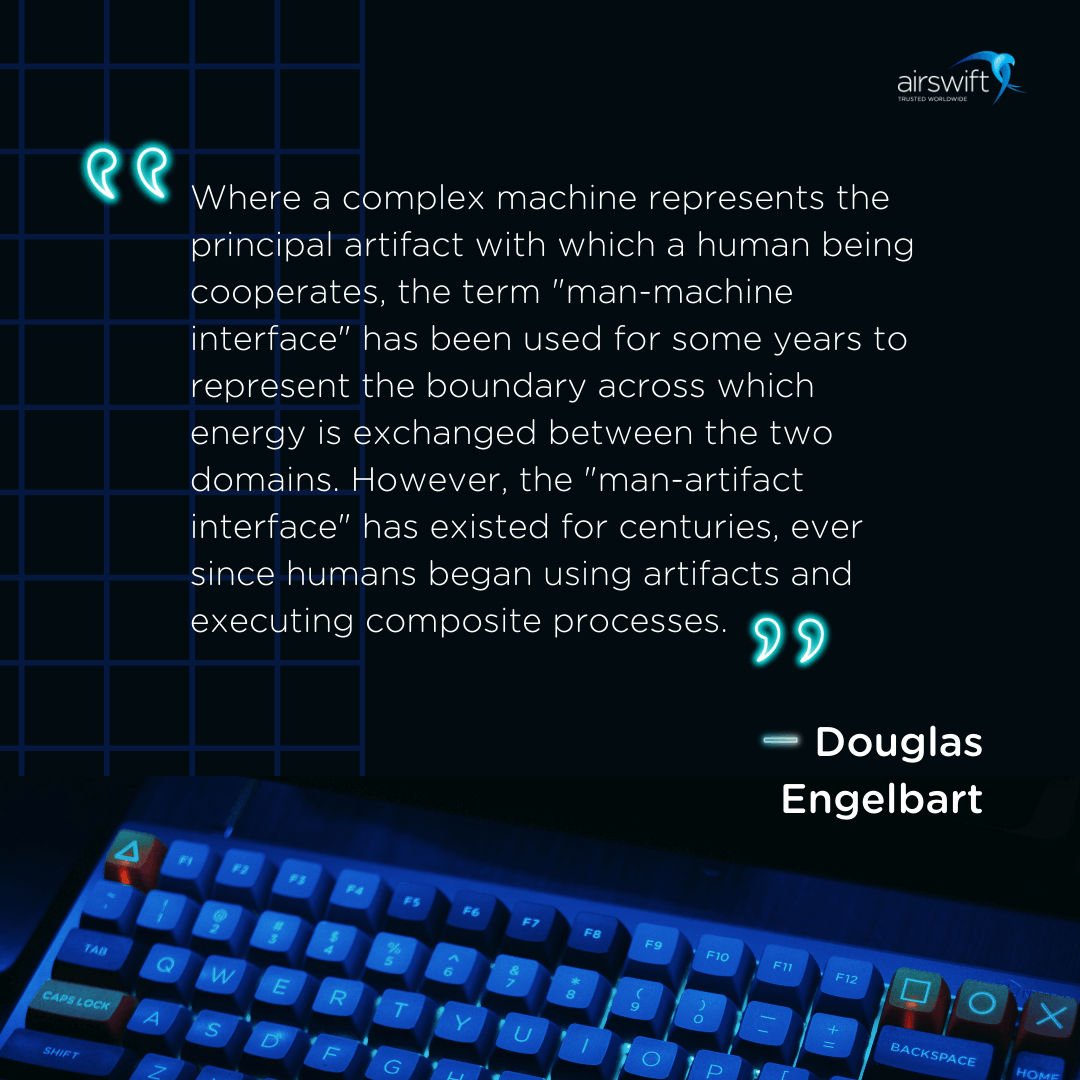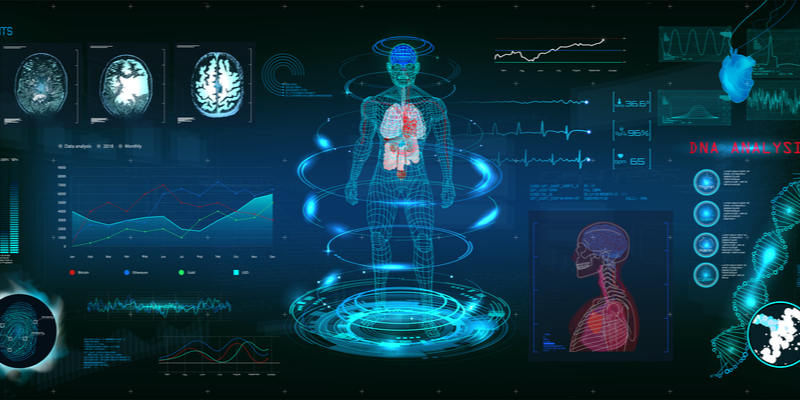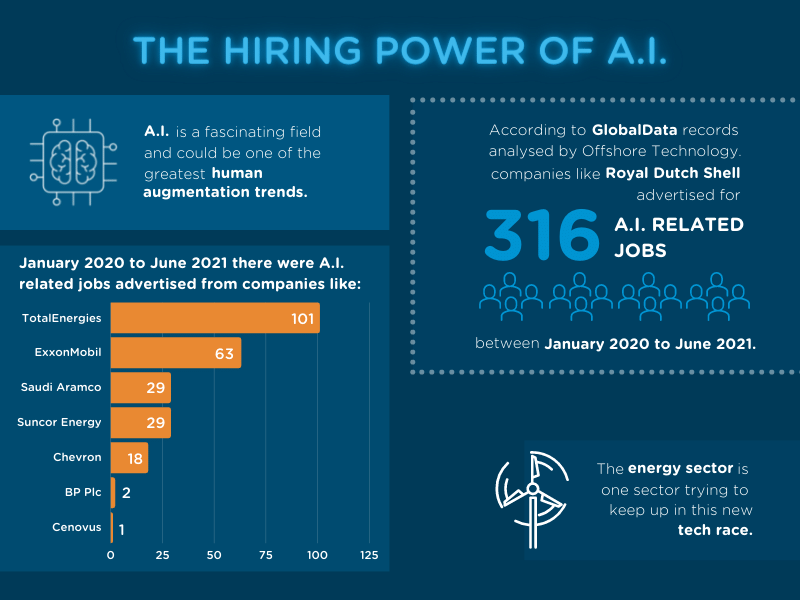
By
Raphael Santos
June 7, 2022
Updated
January 23, 2025
Investment in human augmentation technology is growing fast
It is unanimous: we are in the middle of a new revolution in the technology industry. Apparently, the human augmentation market will be worth approximately 400 billion dollars by 2027, according to Report Ocean.
And that shows a huge increase since 2020. The same report noted that the human augmentation market was worth almost 90 billion dollars in 2020.
What is human augmentation?
Human augmentation is the ability to perform actions, whether physical or mental, with the help of tools that practically integrates into our bodies — pushing the limits of our natural capabilities. Here the word "practically" has an ambiguous meaning since not every increment of this type is directly grafted onto the body. And it has not been difficult to see this human performance improvement in our daily lives.
We are already experiencing an increase in our natural abilities thanks to wearable devices, such as smartwatches and smartphones. This leads to our ability to communicate "where no man has gone before." Sounds familiar?
"Collaboration and augmentation are the foundational principles of innovation."
Vaclav Smill
When did human augmentation start?
One of the most classic studies on human augmentation is the article written by Douglas Engelbart published by the Stanford Research Institute in 1962. The paper lays the foundations for the concept of the augmentation human intellect.
As the first computer terminals were the object of much expectation, it was natural that they opened the possibility for further discussion and, finally, the emergence of the term human augmentation. However, Engelbart delves deeper and details how human capabilities can be extended from four ways: artifacts, language, methodology, and training; and thus identifies its existence for centuries ago.

Why do we need human augmentation?
Douglas Engelbart shows that initiatives to expand native human abilities have been around for much longer. So this is something naturally essential in our lives. Human beings need to expand their limits to improve their intellect and physical abilities, ensuring a better quality of life.
What are the types of human augmentation?
The human augmentation market is attracting media because it can let us become "superhumans," or Human 2.0. With advances in brain-computer interfaces, we are approaching augmented human intelligence. But not all forms of human augmentation technology will grant us "superpowers."
Innovations in human augmentation will occur on three action fronts.
Replicating
Perhaps the category that is the most essential is replicating. We now have human augmentation technologies that can replace some part of compromised human ability.
One good example of a tech player that's immensely impacting the market is Naked Prosthetics, which builds finger prosthetics for everyone who has suffered an accident or an amputation.
Certainly, Naked Prosthetics are one of the benchmark companies when we mix technological material and human health. Not to mention the purpose of the business, which attracts many candidates to participate in the transformation of people's lives.
Are humans becoming cyborgs?
Yes, we are and have been for a while. From the moment a human being placed a prosthesis in his body, the contrast between machine and human started to enter a gray area.
And now, everything is even more confusing when we have virtual and real environments coexisting. In this way, even our gadgets begin to be an inseparable part of ourselves.
Supplementing
As it already says, supplementing is an augmentation tech that supplies more potential of an individual capacity. This could include a wide variety of items like ear devices to others capable of enhancing our vocabulary.
Can the human body be augmented?
Imagine a smart glass that shows you a holographic display providing eye-to-eye contact with remote people or places. The good news, it already exists.
Exceeding
The human augmentation market found its most significant challenge when developing products that exceed human potential. As humans, we know our limits and the things we can do naturally, so in this area, some companies allow us to become the heroes who were never born.
Can the human brain be enhanced?
See what Elon Musk is doing at Neuralink and how they can cross boundaries of the interactions between a human mind and a computer. In addition, this is not the whole picture; many organizations are developing other tools that can change the status quo of human possibilities.
The augmentation scenario is not exclusive to big tech companies. There is room for everybody. Small and medium-sized businesses are also getting involved in the revolution. No wonder a study by Capterra announced that 54% of these types of companies would be adopting wearable computing technology in a short period of up to two years.
And we can't forget the startups that are in the spotlight for fundraising. MindPortal is one of the cases, and it is aiming to develop a wearable device capable of allowing the brain to create fully immersive realities for us to experience alone or with others. According to Pitchbook's Emerging Tech Indicator report (Q2 2021), the $5 million investment in MindPortal is definitely some notable move in the tech industry to keep an eye on.
So, if you are looking to enter the human augmentation market or even learn more about what directions your career can take in the technology industry, check out below the different numbers of options:
Use cases for human augmentation in industry
 Source: Frame Stock Footage/Shutterstock
Source: Frame Stock Footage/Shutterstock
Biomedical solutions
Bioprinting
Bioprinting is undoubtedly one of the most attention-grabbing ones. Organisations like TissueLabs are innovating by focusing on building human organs and tissues in the laboratory. One of the primary jobs fitting this type of company is the research and development engineer.
Ageing Tech
This is an extraordinarily challenging and exciting one at the same time. There are many entry and growth options for candidates. Altos Labs and Calico Labs are the companies to look out for and see how they will shake the future.
Prosthetics
We've already seen what "Naked Prosthetics" can do, but there are many others in the human augmentation market searching for talent to create great solutions. ReWalk Robotics is one example of technology that guarantees a fundamental transformation in people's lives with some disability.
Wearable Devices
Exoskeletons
Construction workers are already using exoskeletons to improve performance and achieve impressive results for the industry. A study by ABI Research concludes a forecast of $1.9 billion through 2025 for this market alone. Want to get on board? Many data scientists will benefit from the high demand for talent.
Smart Glasses
Literally, a smart glass is the closest way to see the digital world. These devices are gathering many resources so we can navigate more freely through the web. Companies, such as Netflix and AccuWeather, already have apps optimized for smart glasses, which opens up an excellent opportunity to recruit more developers capable of leading this trend in the augmentation scenario.
 Source: Frame Stock Footage/Shutterstock
Source: Frame Stock Footage/Shutterstock
Translation devices
Being a polyglot at the push of a button has never been more a reality than it is now. Timekettle is a leader in the pocket translators segment and has several renowned awards in the human augmentation market. The company focused on the user experience to deliver a differentiated and outstanding product in the sector. Without a doubt, professionals with skills related to product design, such as design thinking, can benefit from many opportunities in the area.
Our beloved gadgets
Smartphones and smartwatches are already part of our routine, being seen as almost fundamental parts of our human body. They increase our possibilities, especially in communication, and ensure a market open to innovation and expertise in different areas, from design to development.
Brain-computer interfaces
Brain-computer interface (BCI) has caused hysteria with the public, mainly because of its mind control promise. Here we are talking about a technology capable of increasing the brain's potential, allowing an unmediated interaction between human and machine, not to mention the possibilities of unlocking the neuron's potential.
Many startups have different approaches to this technology, some like Kernel and NextMind, work without the need for implantation through surgery, while others already have invasive methods, such as Neuralink.
Artificial Intelligence
Artificial intelligence is another tool that is already present in our daily lives. Numerous companies have invested in this technology coming from diverse sectors such as finance, recruitment, entertainment, energy, and even food. It is evident that the help of a "supercomputer" considerably increases our possibilities as human beings.
One of the most promising companies in the human augmentation market is DeepMind, acquired by Google in 2014, and has been showing impressive results with the development of its artificial intelligence called Alphafold. This A.I. has the mission of predicting the shape of a structured protein and thus solving a 50-year-old riddle.
The consequence of such a discovery could lead humanity to better fight diseases and develop medicines, improving our human health.
The hiring power of A.I.

Can machines replace humans?
Machines probably will replace many of the existing jobs, but at the same time they can make it possible the creation of new ones.
There is also a lot of optimism about the evolution of artificial intelligence in the job market. Today much has been discussed on AI assisting a skilled workforce, and there is truth in that statement. So, it is obvious that many jobs will become obsolete, but the potential for creating new ones, and the support in many existing ones, brings a new, much more interesting prism about the arrival of robots to our work routine.
What are the disadvantages of human augmentation?
In addition to bringing many benefits, human augmentation can also promote a significant ethical problem. More moral questions become subject to objective criteria as our dependence on artificial intelligence increases. Also, not to mention the unfair competition caused by those who will be able to bear the costs of having their human capacities increased and those who cannot.
This scenario demands the participation of more professionals specializing in ethics and legal issues involving human augmentation.
Legal and Ethical Support
The growing investment in the human augmentation market can also generate increased demand for law professionals. This will be necessary to help with the legal and ethical issues that arise from those new technologies.
The problem in competition
Every institution will need to keep up with the ethical issues arising from the advancement of tech. The risk of not looking at this can result in irreparable consequences for the company's image and future.
Competition in general, both between individuals and between businesses, is one subject likely to gain more space in the discussion among policymakers — how far can we allow human augmentation to become something that unbalances the game for those able to pay for more?
The rise of lawtechs
The "T-shaped lawyer"
The future for the legal profession involves a complete change in career posture. Nowadays, we see the "T-shaped lawyer" concept emerging, which follows the letter "T" analogy in exposing how these professionals treat their development. They need to have a deep knowledge of their core discipline while acquiring other non-legal skills at a less depth level. That is crucial in the formation of multidisciplinary teams capable of successfully facing technological change.
Augmented lawyering shows how the professional is essential to perform the necessary inputs to an A.I. system and thus interpret the results to the end-user. And so many lawyers can become more valued in the market by having their skills augmented by artificial intelligence or even wearable devices.
From Human to Business Augmentation
When we talk about human augmentation technology, it is inevitable to see its principles in the business model. Companies are using that mindset to achieve better results. For example, the practice of outsourcing is common in current business models as a way for a company to increase its resources and then expand more smoothly and cost-effectively.
 Source: Frame Stock Footage/Shutterstock
Source: Frame Stock Footage/Shutterstock
Staff Augmentation
According to a survey by Deloitte, 88% of the interviewed companies answered standardisation and process efficiency as the first motivation for choosing to outsource; the second one (84%) was the low cost of that practice. The survey concluded that there is an expectation of a digital transformation and a culture of innovation growth in one to three years.
Talents from around the globe
On these occasions, one of the gains with outsourcing is the increased scope to search for talent. With the help of partners capable of providing efficient recruitment solutions, finding that key piece in your team becomes more effortless and can arrive from the other side of the world.
Scalability
Scalability is also a sure thing for anyone looking for a workforce solutions partner. All of those characteristics make business augmentation look like a human augmentation. As a result, the market is starting to make this policy of improvement a transversal practice, starting from a product policy and then reaching the recruitment and the business development policy.


